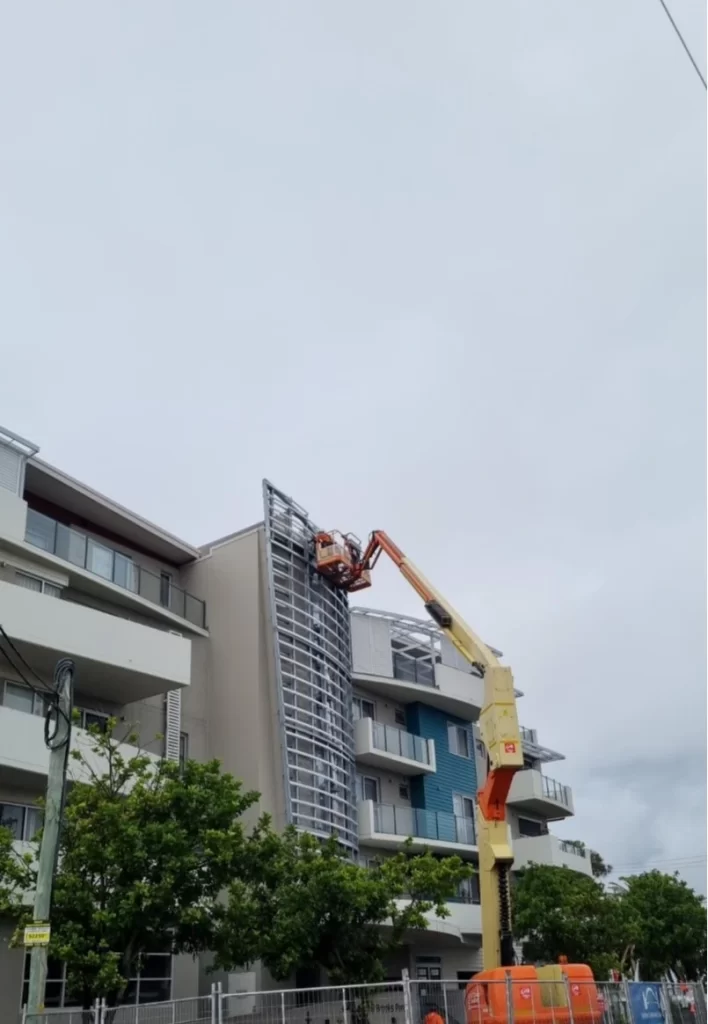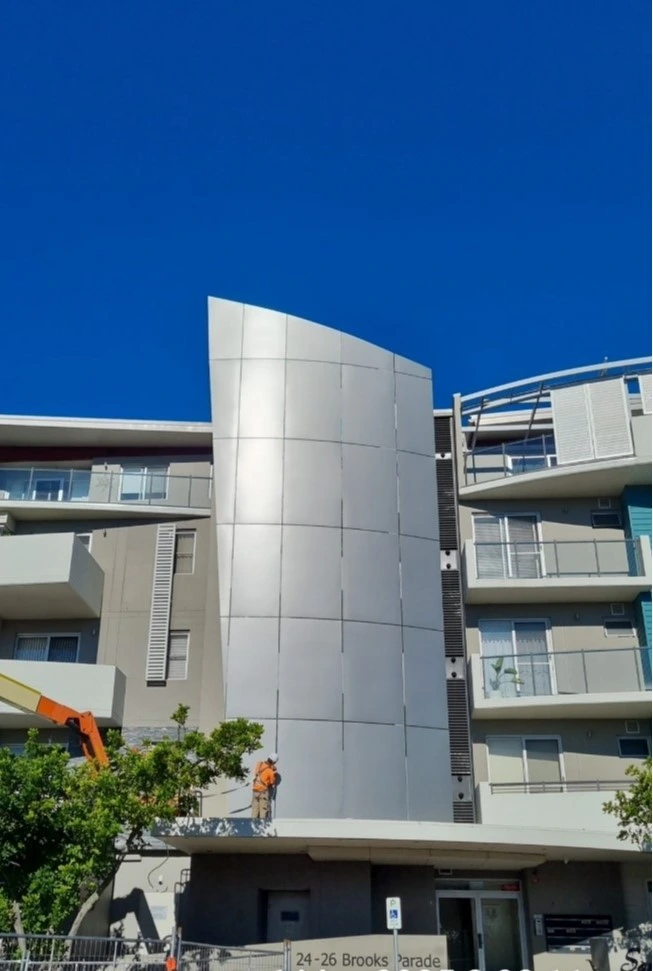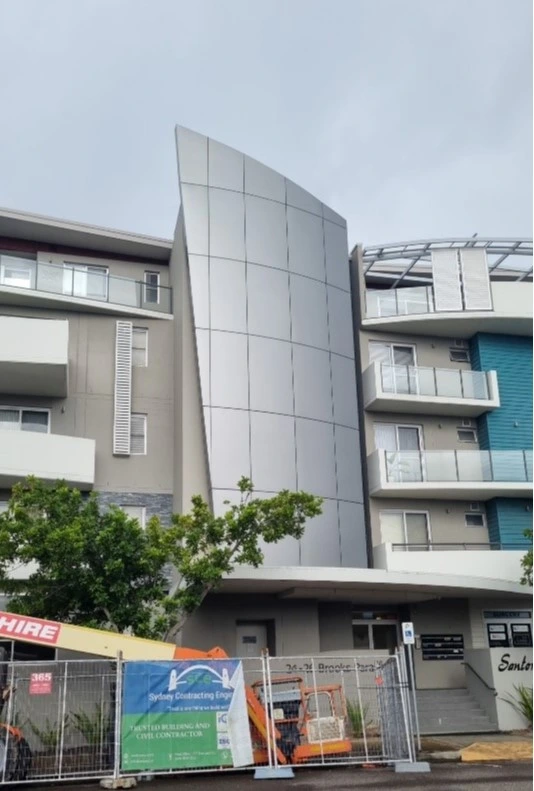Belmont Recladding Project was delivered as part of Project Remediate – Ensuring safety through precision and compliance
Why Recladding Was Essential
In the aftermath of the 2017 Grenfell Tower fire, ACP cladding with flammable cores was declared a major safety concern across Australia. The Belmont building was identified as containing such cladding, requiring urgent remediation through the NSW Government’s Project Remediate.
SCE was engaged to deliver a complete recladding solution, Belmont Recladding Project, from safe removal through to full compliance. We managed all technical, structural and logistical aspects while adhering to strict regulatory frameworks.
Our Step-by-Step Process of Belmont Recladding Project
Combustible cladding was carefully removed and disposed of in accordance with safety standards.
Step 1: Safe Removal
Combustible cladding was safely dismantled and disposed of following EPA and WHS protocols.
Step 2: Substructure Inspection
Licensed engineers thoroughly examined the underlying structure to ensure it was free of corrosion or defects.
Step 3: Subframe Installation
Outdated galvanised steel frames were replaced with marine-grade aluminium for long-term corrosion resistance in Belmont’s coastal environment.

Keeping the Community Safe
Our traffic management team implemented a site-specific control plan, specifically designed for Belmont Recladding Project, maintaining vehicle and pedestrian access while securing the work zone.
Engineering Precision
The façade’s unique curvature required millimetre-accurate measurement and fabrication. Our experienced team ensured every panel was shaped and installed with exacting detail.
Quality Comes First
Any non-compliant or defective panels were refabricated before installation. We don’t compromise on quality—every panel is inspected and signed off before final fitment.
Installation That Lasts
Panel Installation
Installed using Elevated Work Platforms (EWP) to guarantee safe and efficient vertical transport.
Waterproofing
Joint sealants were applied to ensure watertight protection, critical in high-moisture zones.

Working Through Design Delays
Despite extended delays caused by external design consultants, we remained solution-focused and collaborative, keeping the client informed and the project moving forward.
Ongoing Communication & Support
Throughout the project, we maintained full transparency with all stakeholders. From weekly progress reports to design reviews, our support was consistent and solution-oriented throughout Belmont Recladding Project.
A Safer, Modern Façade
The Belmont recladding project now stands as a fully compliant, visually refreshed, and safer residential asset—meeting all fire safety and design standards.

FAQ
1. Why was recladding necessary for the Belmont building?
Following the Grenfell Tower tragedy, the building was identified as containing combustible ACP cladding, which posed significant fire risks and required urgent remediation under Project Remediate.
2. What type of cladding replaced the old system?
We installed non-combustible aluminium cladding with corrosion-resistant framing suitable for coastal environments.
3. How long did the Belmont recladding project take?
The project duration was 10 months, extended slightly due to design delays beyond our control.
4. Was traffic impacted during the works?
Minimal disruption was ensured through certified traffic controllers and an approved site traffic plan.
5. How does SCE ensure quality during installation?
We use precision measurements, millimetre accuracy, and reject any non-compliant or faulty materials before installation.
6. What was SCE’s role in the project?
SCE was appointed as the Remediate Contractor, responsible for cladding removal, engineering coordination, installation, quality assurance, and site safety.
Thank you for your visit, and welcome to the construction home
